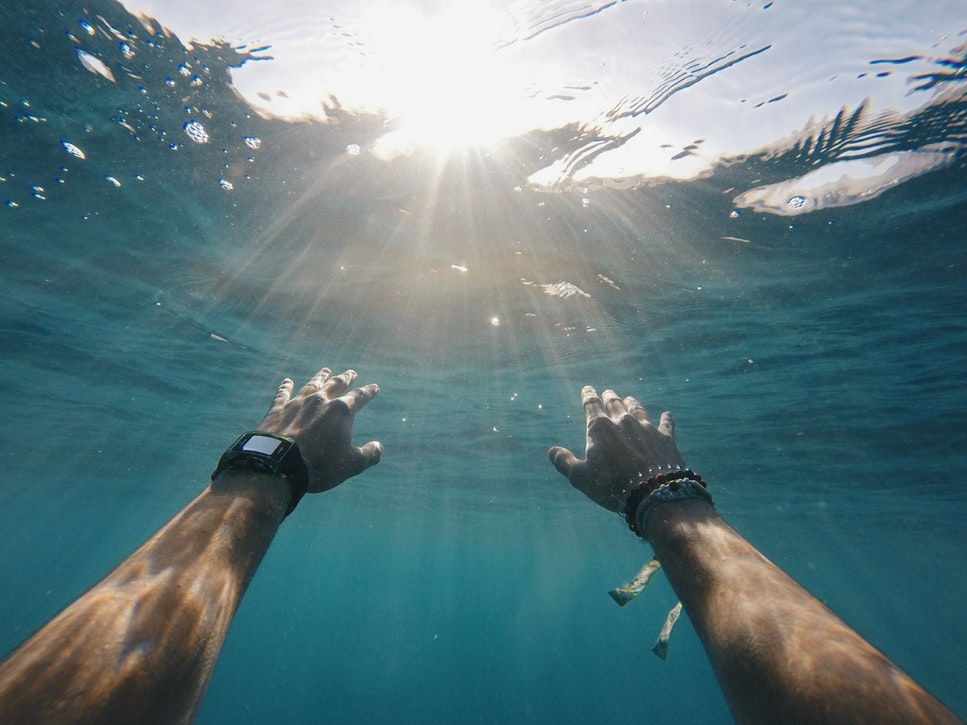How to swim safely in the ocean

We all love going to the beach at any time of the year as long as the weather conditions allow it. What comes with the beach is, of course, swimming in the ocean and playing around in the waves. For some, this is the hard part of a beach excursion, and when it comes to safety, a lot of people are not ready to accept the challenge and head into the water. Instead of being scared and staying out in the sun all day, learn how to protect yourself by knowing the best time to swim safely in the ocean.
Ocean safety

Of course, the first thing you should do before you get your feet wet is to learn how to swim. Always swim on beaches where you know there is a lifeguard that can jump into the water and save you if something unexpected happens. Follow and respect all the instructions from the lifeguards and swim only in the designated area. Be aware that if you move further down the beach where there’s no form of security, you are risking your life. Before going into the water check the weather conditions, never swim alone, and don’t even think to swim in the ocean when you’re drunk! Also, if your swimming skills are not too good, don’t go far, and make sure you have enough energy to swim back to the shore.
Safety tips to have in mind
- If you are swimming with kids or inexperienced swimmers, make sure everybody has a life jacket provided by the coast guard. Don’t let yourself or anyone else to go into the water without a flotation device if not a good swimmer.
- Don’t dive headfirst when you don’t know what’s under the water. First, check with your feet or use a snorkel mask to see what’s hiding on the bottom.
- Pay close attention to kids and elderly people while on the beach. Don’t let any of them go too far. Wave actions can be strong even in shallow waters and close to the beach.
- Stay away from any aquatic life, plants or animals. Don’t touch or disturb them because you never know if they are dangerous or poisonous.
Rip Currents

Any large area of water can form rip currents, no matter how far from the shore. Therefore, again, swim only on beaches where there are lifeguards. If you ever get caught in a rip current, remember the following tips:
- No matter what happens, never fight the current and don’t panic.
- When caught in a rip current, swim parallel with the shore until you get out of the current. Then start swimming toward the shore.
- If swimming to the shore is not possible, float until you get beyond the rip current, and then start swimming.
- If you become desperate and you estimate that swimming to the shore is not possible at all, start waving and screaming as loud as you can. Try to draw attention to yourself, look for nearby swimmers or the lifeguards on the beach.
- Stay at least 100 feet away from piers and jetties.
- If someone else is in trouble, let the lifeguard know immediately. If there’s no lifeguard, call 911 right away. Throw a flotation device towards the victim and try to explain how to escape the current. Don’t put your life in jeopardy if you are not sure you can get back to safety. Get professionals to help the victim.
- When you go to the beach, check the weather conditions, look for the warning flags, talk to the locals and ask the lifeguards if it’s safe to swim and what are the possible hazards. Good luck!

If you have any comments then please drop us a message on our Outdoor Revival Facebook page
If you have a good story to tell or blog let us know about it on our FB page, we’re also happy for article or review submissions, we’d love to hear from you.
We live in a beautiful world, get out there and enjoy it. Outdoor Revival – Reconnecting us all with the Outdoors.
